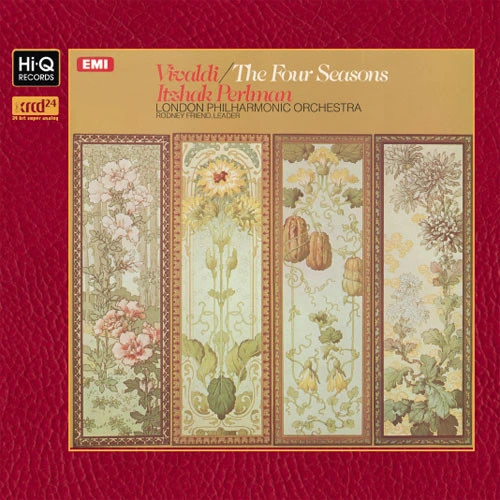 Click Here for Sound Samples!
Click Here for Sound Samples! Audiophile XRCD24 Mastered from the Original Analogue EMI Master Tapes!
Can Be Enjoyed On Any CD Player!
The four concertos entitled The Four Seasons which open Vivaldi's Op. 8 date from about 1725. It was fashionable at the time to depict nature in music, and Vivaldi wrote other descriptive pieces, both suggesting moods and specific images. As a subject, the seasons have been depicted musically by many composers (Lully before him, as a ballet, Haydn, Tchaikovsky and Glazounov and others after him) though Vivaldi may have been the first to do so symphonically; but in terms of both illustrative power and pure music, Vivaldi's concertos are perhaps his greatest achievement. Apart from fashion, it was only natural that his dramatic temperament should have inclined him towards pictorial effects in purely orchestral music. Programme music is as old as music itself (depicting the sounds of nature was the basis of primitive music) and has been used in many forms. It can dictate the form of the music (as with Liszt and other Romantics) or it can be used within a preconceived formal pattern, as in The Seasons. These are in perfectly orthodox concerto form, with the result that the pictorial elements are mainly confined to the solo episodes between the ochestral ritornelli. The four concertos are each prefaced by a sonnet (possibly written by the composer, though he does not put his name to them), which are engraved at the beginning of the solo violin part, and which describe in detail what the music is portraying. The dedication of Op. 8 to Count Marzin specifies clearly that the concertos had been heard by the Count with favour, without having read the sonnets, long before their publication, so Vivaldi had not been tied to the texts originally. However, having added them, he makes the progression of events very clear: not only are fragments of the poems set against individual episodes, but there are also different subtitles set against individual instrumental parts in the more significant passages: in the Largo of Primavera, for example, the solo violin part has the description: "Il caparo che dorme" (the sleeping goatherd) and the viola "Il cane che grida" (the barking dog). But for all this, the greatest value of the music lies in its beauty as music per se, which has made it Vivaldi's most beloved score.
Features:
Mastered from the Original Analogue EMI Master Tapes!
Superior Audiophile XRCD24
XRCD24 is a standard "Red Book" CD and can be enjoyed on any CD player
Musicians:
Rodney Friend, leader
Itzhak Perlman, violin, conductor
London Philharmonic Orchestra




 Turntable Accessories
Turntable Accessories Headphone Accessories
Headphone Accessories Cable Accessories
Cable Accessories Vinyl Accessories
Vinyl Accessories Compact Disc Accessories
Compact Disc Accessories







